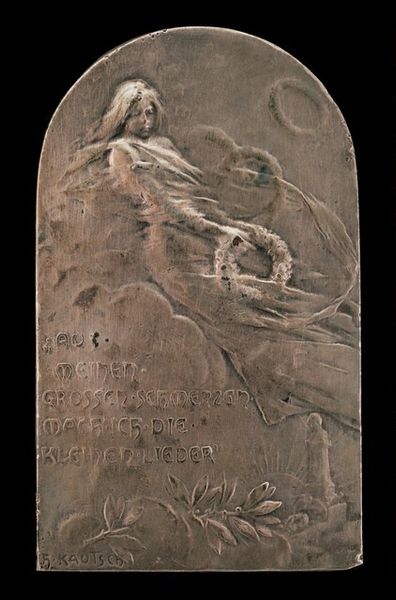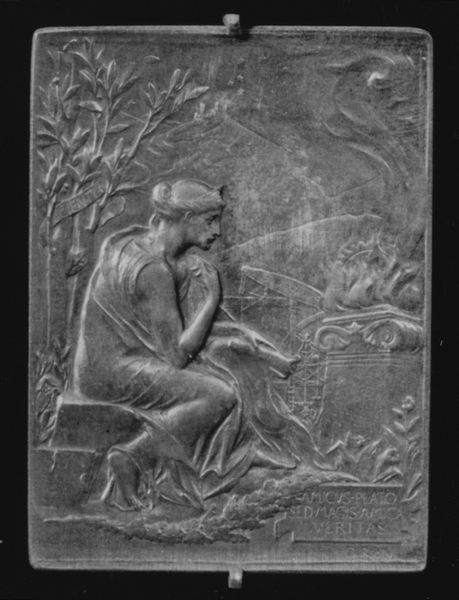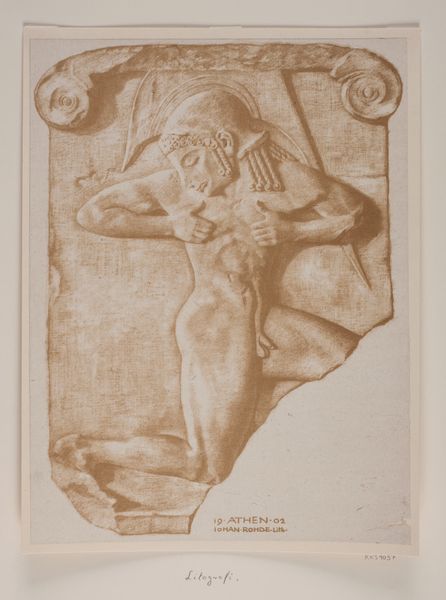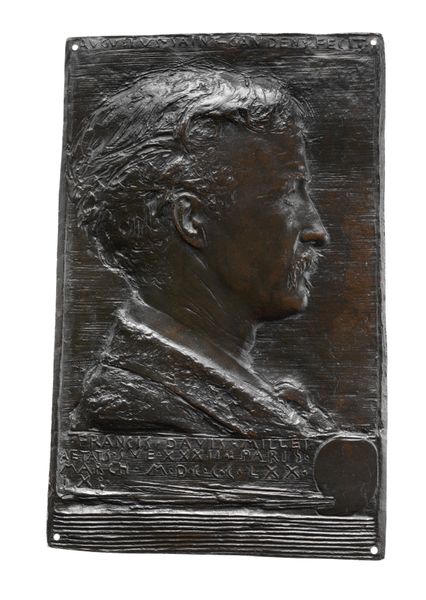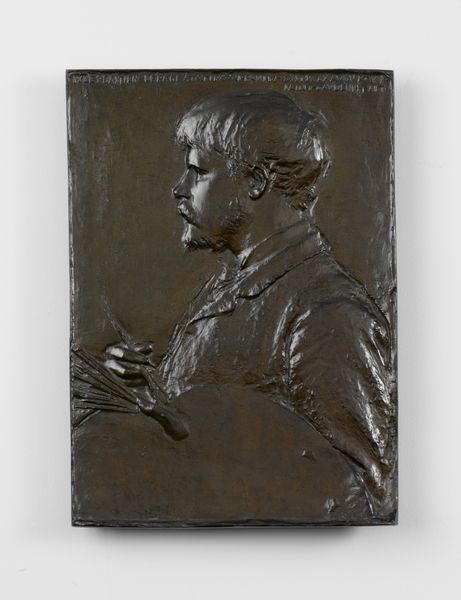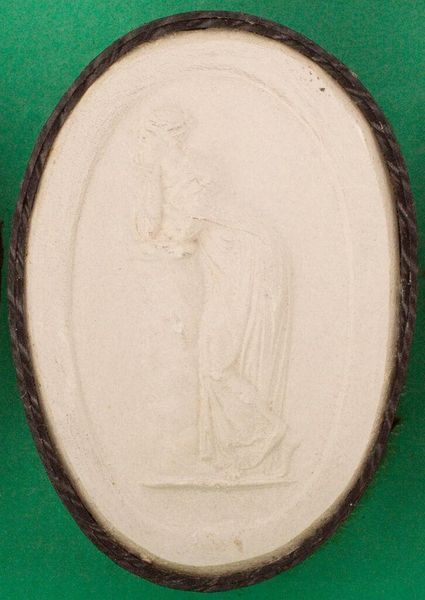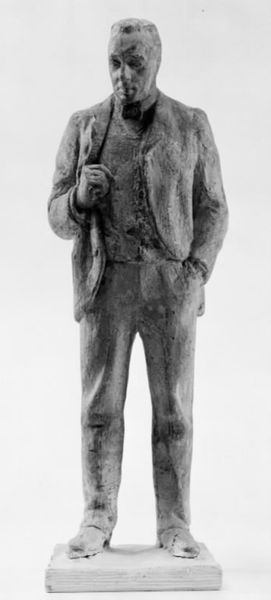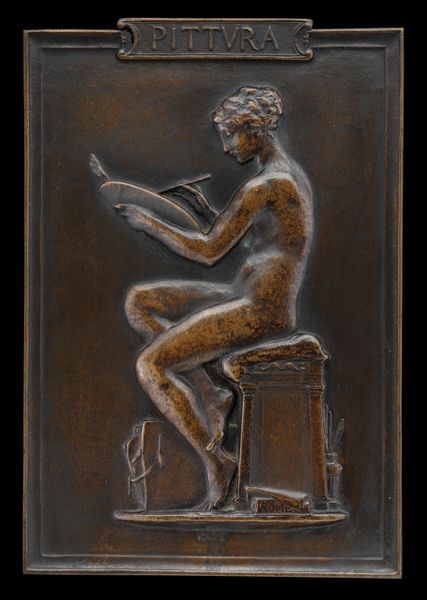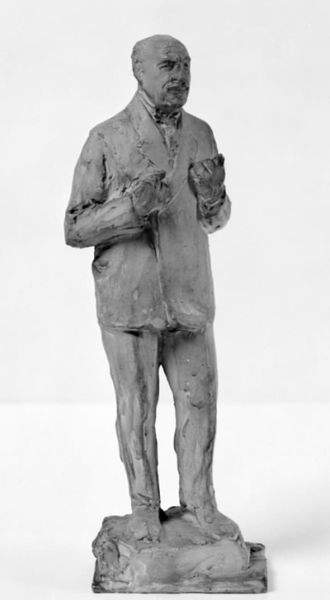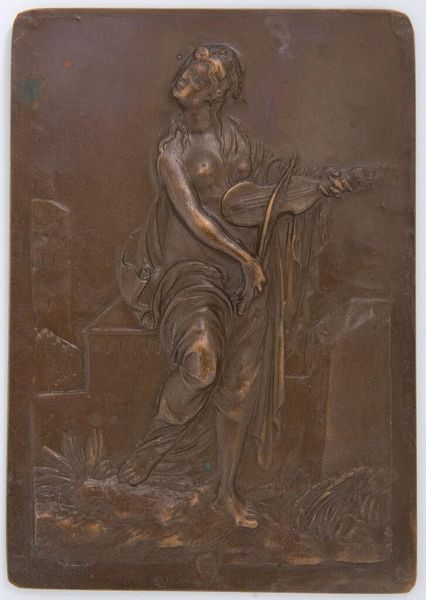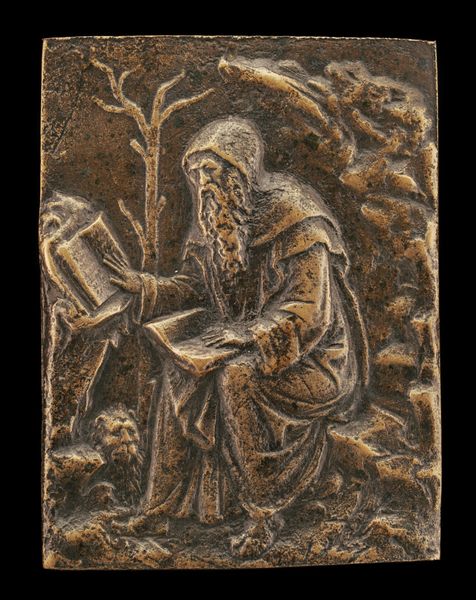
Heinrich Heine, 1797-1856, German Romantic Poet (obverse) 1897
0:00
0:00
Dimensions: overall: 7.5 x 4.5 cm (2 15/16 x 1 3/4 in.)
Copyright: National Gallery of Art: CC0 1.0
Curator: This artwork is a bronze relief from 1897, titled "Heinrich Heine, 1797-1856, German Romantic Poet (obverse)," crafted by Heinrich Kautsch. Editor: Immediately, I’m struck by the pose—the figure’s slumped posture conveys a sense of introspection, perhaps even weariness. The matte texture of the metal lends it a weightiness. Curator: Indeed. Kautsch’s composition utilizes a bowed shape, a format reminiscent of classical commemorative medallions. Heine is depicted seated, hunched over his work, quill in hand, in deep thought. Notice the use of light and shadow to create depth. Editor: The bronze casting process itself is worth noting. Considering its late 19th-century origins, how does this material rendering of the artist reinforce notions about his creative labor and place within society? Was bronze chosen for its longevity or connotations of permanence, prestige, or something else? Curator: Excellent point. Bronze was a very deliberate choice. It evokes a sense of enduring legacy and the weight of history, literally and figuratively embedding Heine within a cultural canon. Observe also how Kautsch balances realism with subtle idealization—the folds in Heine's garments and the details of his face are lifelike, yet the overall presentation has a noble quality. The added laurel further underscores Heine's stature as a cultural figure. Editor: It's fascinating to consider the labor embedded in this piece. Beyond Kautsch's artistic work, there's the labor of mining the metal, smelting it, casting and finishing. How might these industrial processes affect how we perceive Heine's legacy in this context? Curator: It provides a counterpoint. We see not just the idealized Romantic poet, but also a glimpse into the industrialized society that both celebrated and commodified him. Editor: Right. In other words, it memorializes the myth, but also reveals the means of its construction. Overall, this piece has far more depth than you perceive on a passing glance. Curator: Precisely, Kautsch masterfully weaves together artistic skill, cultural context, and material significance into a compelling artistic statement.
Comments
No comments
Be the first to comment and join the conversation on the ultimate creative platform.
